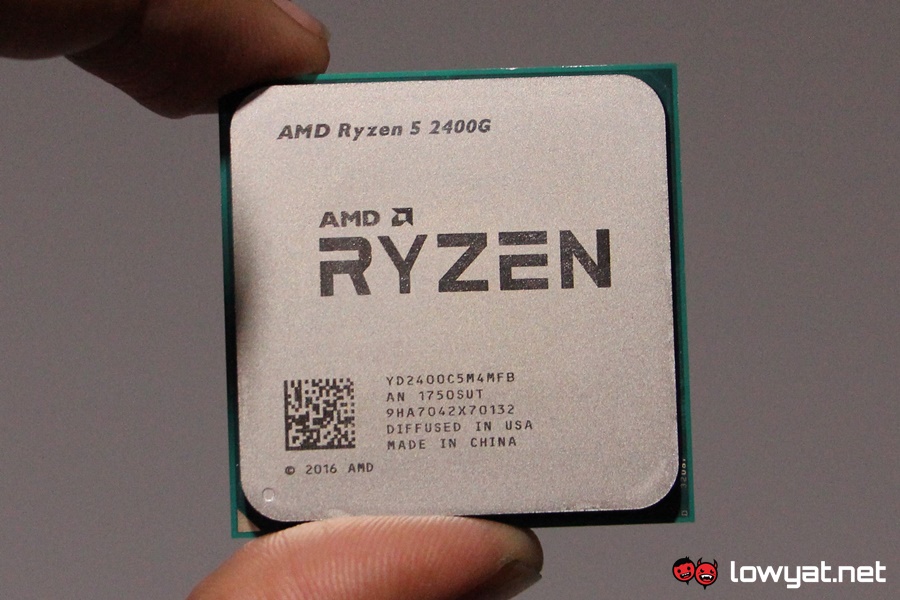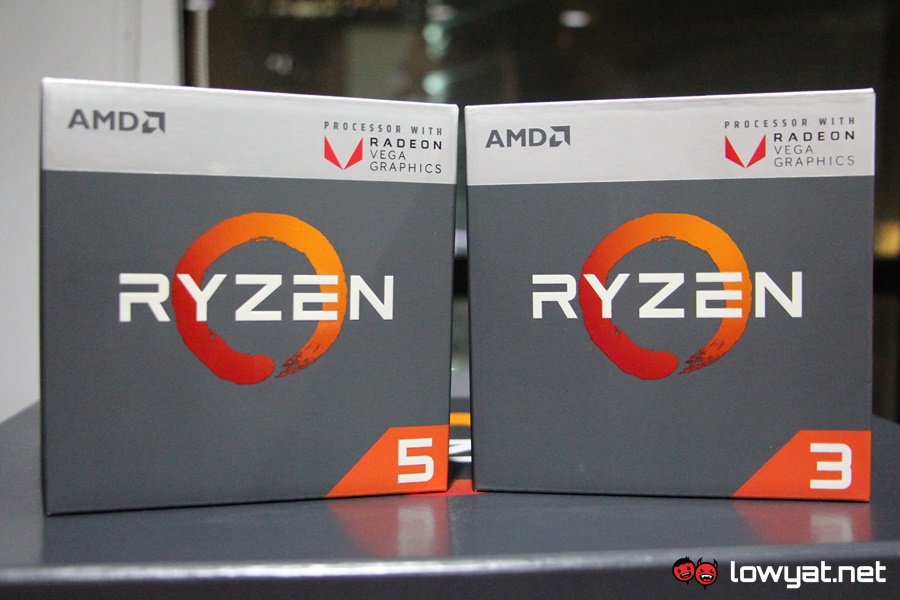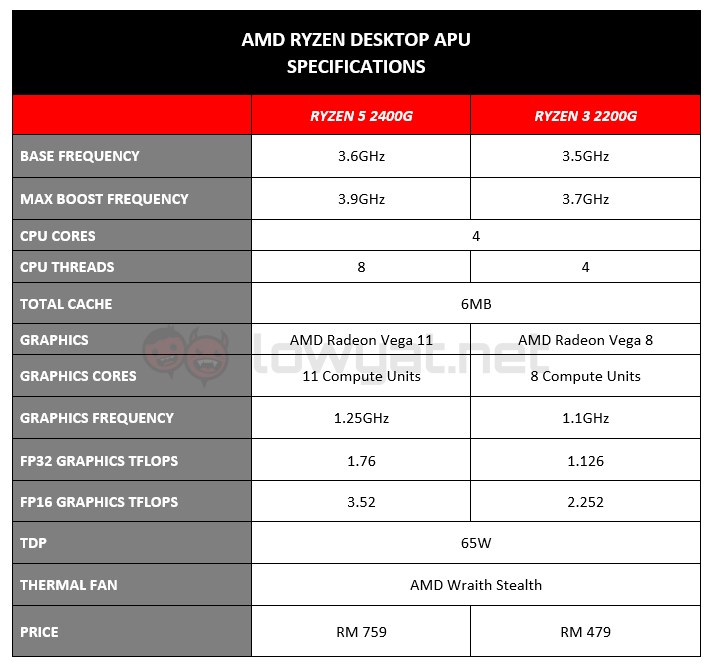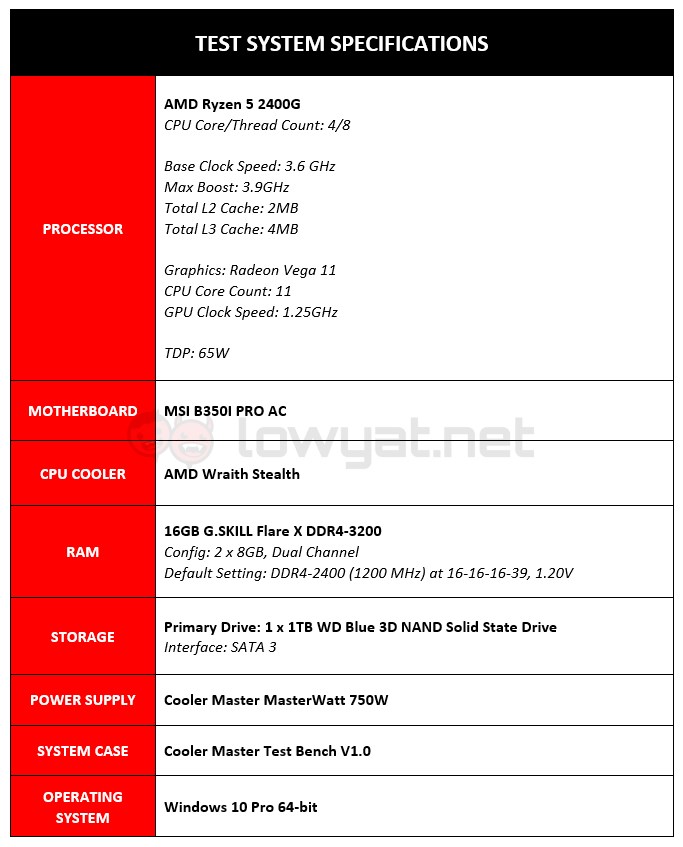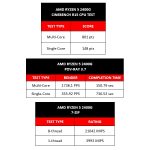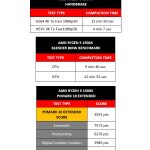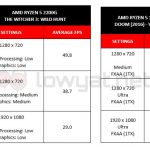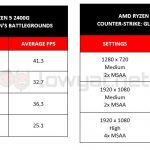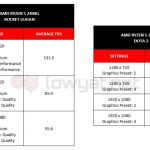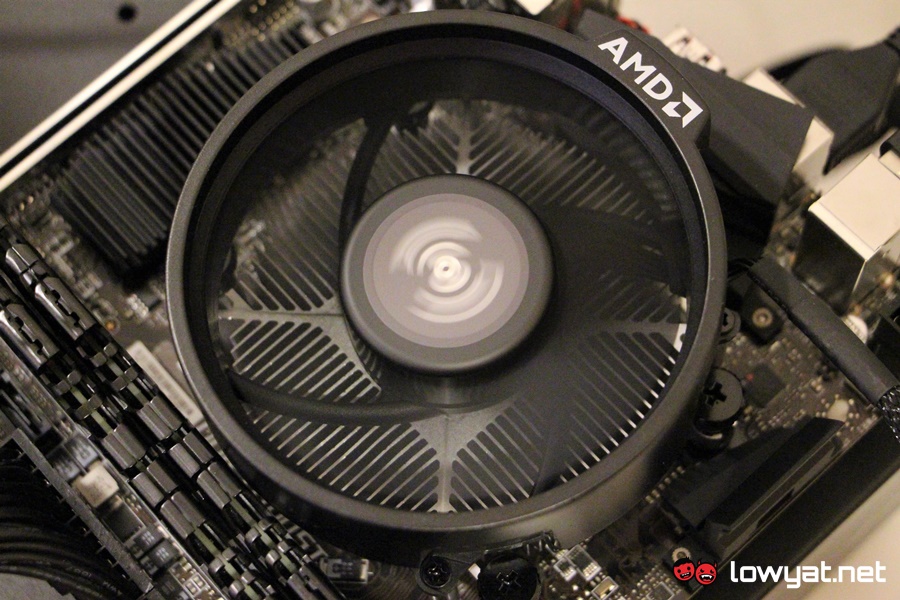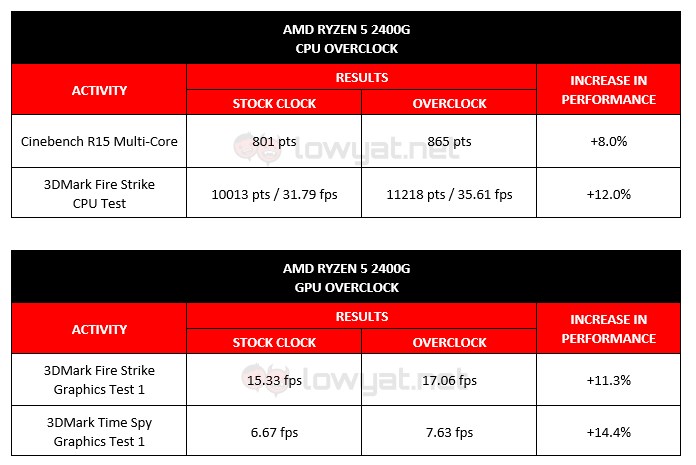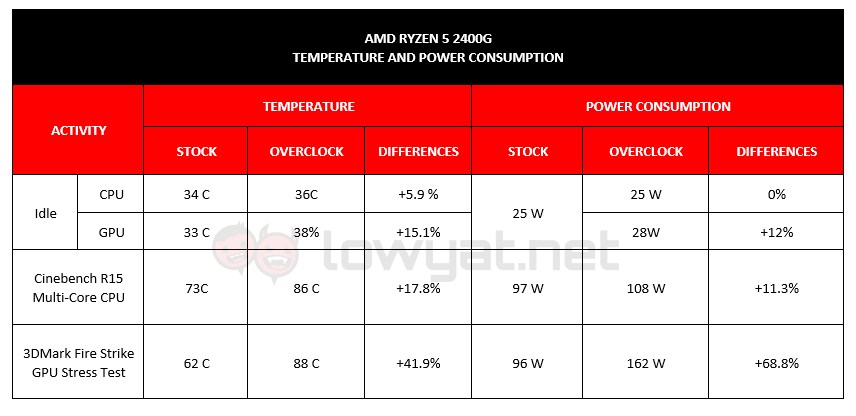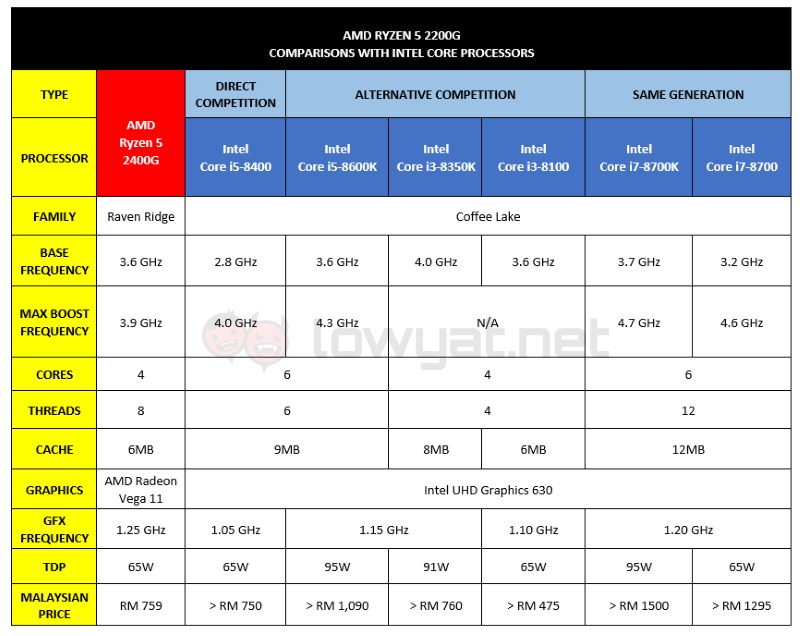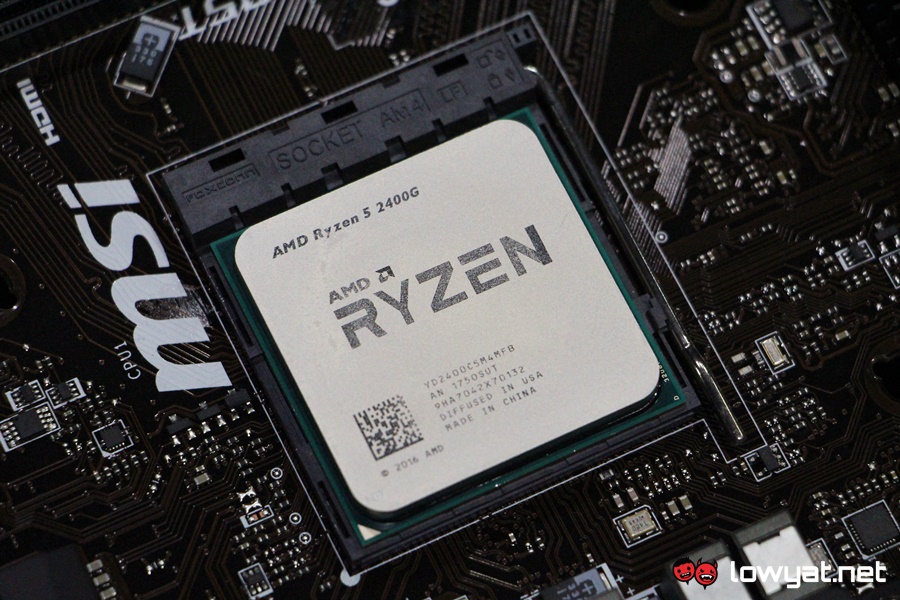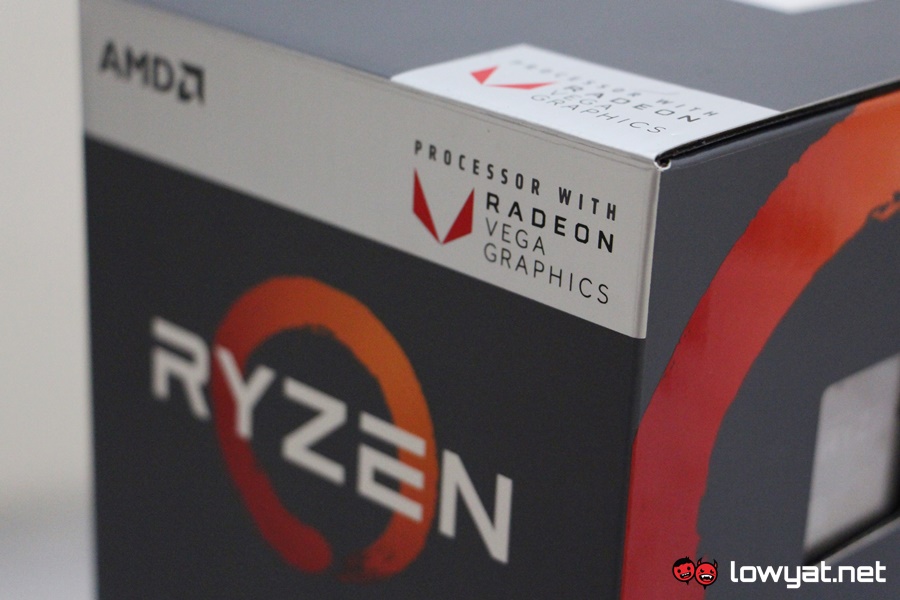In early 2017, AMD Ryzen processors began to make their way into the market. From there on, the market’s dynamics for desktop PCs have started to change as AMD finally has very competitive products on its hands.
The popularity of Ryzen processors have certainly delivered a positive impact to the company, but there is still something missing in the equation. Since all the Ryzen processors that were released last year are pure CPUs, consumers need to purchase a separate graphics card in order to utilize the chip, as opposed to Intel Core mainstream processors which comes with their own integrated graphics (IGP).
As known by many, Intel’s IGP might not be that great but the all-in-one solution is still relevant for a significant part of the market. So, that is what AMD is going to rectify in 2018 through the launch of its Raven Ridge desktop APUs yesterday, which offers the power of the company’s Zen CPU and Vega GPU in one single package.
Not only that, the company has also claimed that its brand-new APUs are powerful enough for gaming – something that you don’t usually associate with integrated graphics. Available in two models, the Ryzen 5 2400G has more firepower as compared to the lower-end Ryzen 3 2200G:
Now, let’s see how the new chip performs throughout our tests.
Test System
The AMD Ryzen 5 2500G review kit, which includes the chip, motherboard, RAM, and cooler is on loan from AMD.
The monitor used in this review is the ASUS ROG Swift PG27AQ 4K Gaming Monitor, courtesy of ASUS Malaysia.
The Cooler Master MasterWatt 750W PSU in the test system is courtesy of Cooler Master Malaysia.
The WD Blue 3D NAND SATA SSD in the test system is courtesy of Western Digital Malaysia.
Performance Tests
We used a set of software that represents several tasks that users might perform with the chip. Almost all of these applications depend on CPU capabilities rather than the GPU.
In general, the results that were achieved by Ryzen 5 2400G are within the same range of the AMD Ryzen 5 1500X stand-alone CPU that we tested last year. This shows the strong CPU foundation that is contained within the new chip.
Gaming Tests
Alongside 3DMark tests, we also ran three different game titles that represent three different graphics technologies. With the exception of Doom, Rise of The Tomb Raider and Witcher 3 are still quite challenging for the chip despite being released into the market a few years ago.
On the Ryzen 5 2400G, these two games are mainly playable at above 30fps when their graphic settings are set to 720p resolution and medium graphics quality. This should hold true for many of the newer graphics-intensive AAA games out there as well.
eSports Gaming Tests
The titles above are some of the most popular games in the world, and all of them can be played exceptionally well at 1080p resolution with medium graphics settings. This is with the exception of PlayerUnknown’s Battlegrounds, which has higher graphics requirements.
Overclock, Temperature, Power Consumption
It might be made for the mainstream market, but the Ryzen 5 2400G is a rather interesting product when it comes to overclocking. This is due to the fact that users are able to overclock both of the chip’s CPU and GPU provided they use motherboards that are equipped with an AM4 chipset that supports overclock.
To reflect this capability, AMD has also updated its Ryzen Master software in order to allow users to tweak their Ryzen 5 2400G’s GPU alongside the chip’s CPU and memory clock.
By having both of its CPU and GPU unlocked, this presents a rather unique challenge for overclockers out there since they have to tweak multiple settings in order to find that perfect overclocked balance of all three main elements within the chip. Unfortunately, we were not able to find that balance ourselves due to time constraints.
Nevertheless, we did perform simple overclocking on the chip anyway in order to find out how far can we push its CPU and GPU on an individual basis. While we managed to bring up the CPU’s clock speed to 3.9GHz on all four cores using the default CPU voltage setting of 1.45V, we increased it to 1.55V for additional stability. At the same time, we have also tuned the system’s memory speed and voltage to 3200MHz and 1.35V respectively.
As for the GPU, we have keep the CPU and memory speed at stock settings though in order to increase the GPU clock speed to 1650MHz which is 32% more than its base clock speed of 1250MHz. We have also increased the GPU voltage settings from 1.1V to 1.5V.
Increasing the chip’s clock speed and voltage means that the chip’s power consumption and temperature goes up as well. At stock settings though, the Ryzen 5 2400G behaves very well.
One thing to note though: you definitely need a better cooler if you want to overclock this chip on a higher level, aside from having good power supply unit. During our tests, the chip’s stock cooler which is AMD’s own Wraith Stealth cooler was not able to contain the heat that the chip produced when we put it through the OCCT CPU stress test as well as the Blender’s CPU and GPU BMW benchmark.
Throughout these tests, the chip’s temperature went beyond its thermal limit very quickly, which forced us to stop the tests even though the tweaks we did on it were quite stable in the tests we showed above. Nevertheless, you would able to see that even during those successful tests, the chip was already running at temperatures which are dangerously close to its thermal limit of 95°C.
Competition
Given their pricing, it is without a doubt that the Intel Core i5 8400 is Ryzen 5 2400G’s closest competitor. While we don’t have an Intel-based system to directly compare with AMD’s offering, the reference test results that was provided to us by the company showed that Intel’s chip edges the Ryzen APU in most CPU-focused applications, although the differences are not far from each other.
This is likely due to the higher amount of cache, boost clock, and instructions per clock on the Core i5 8400. However, the story is completely different when it comes to gaming performance of the integrated Intel UHD Graphics 630 inside the chip, which is essentially the same HD Graphics 630 from the previous generation of Intel Core processors.
While certain games, especially popular eSports titles such as Dota 2 and CS:GO can be played at 720p with low or medium graphics settings on Intel UHD Graphics 630, the experience is much smoother with the AMD Radeon Vega 11 graphics on the Ryzen 5 2400G. For some titles, they can even be played at 1080p resolution, although users still need to tweak their graphics settings.
Furthermore, the Ryzen 5 2400G is overclocking-friendly unlike the Core i5 8400 which is locked by Intel. Additionally, the AMD AM4-based motherboards are generally more affordable than Intel Z370-based motherboards which further strengthens the value proposition of the Ryzen 5 2400G.
Conclusion
With a strong CPU performance at its foundation, adding one of the best integrated graphics solutions that we’ve seen so far makes the AMD Ryzen 5 2400G an exceptional product for users who are looking to build a capable basic system and not planning to splurge on dedicated graphics card.
Furthermore, the Ryzen 5 2400G arrives at a time where there is a serious supply issue for discrete graphics cards, driving their costs way higher than their original price tags. The integrated Radeon Vega graphics inside the chip is good enough for a majority of popular eSports titles out there, which means that budget-oriented users are still able to play their games at resolutions of up to full HD as long as they are not so picky about their graphics settings.
Even though the chip faces a tough challenge from the Intel Core i5 8400, the Ryzen 5 2400G’s graphical prowess, overclocking capability, and the abundance of motherboard options provided by the AM4 ecosystem surpasses Intel’s offering in terms of overall value.
Follow us on Instagram, Facebook, Twitter or Telegram for more updates and breaking news.


